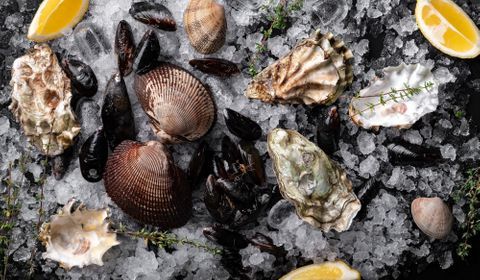Why Your Seafood May Be Dangerous This Summer
Published on
Updated
Reading 3 min.

Seafood consumption is becoming increasingly risky for health due to the proliferation of dangerous bacteria. A recent study highlights the growing threats posed by Vibrio bacteria, exacerbated by climate change and antimicrobial resistance.
Seafood under high surveillance
Climate change and rising sea temperatures are increasing the proliferation of Vibrio bacteria in seafood. These bacteria thrive in warm waters and can cause serious infections in humans. A recent study by the European Food Safety Authority (EFSA) highlighted the increased risk associated with these bacteria, highlighting the need for increased vigilance.
A growing threat according to EFSA
Bacteria Vibrioresponsible for diseases such as cholera, are increasingly present in seafood. Warming oceans create ideal conditions for their multiplication. EFSA has reported that these bacteria, particularly present in oysters, mussels and other seafood, represent a major health hazard.
Alarming figures
According to EFSA data, the number of cases of Vibrio infections has increased significantly in recent years. The Vibrio bacterial group includes several species that can cause vibriosis. In the European Union, Vibrio parahaemolyticus, Vibrio vulnificus and Vibrio cholerae are the most important species for public health linked to seafood consumption.
- Vibrio oparahaemolyticus can cause gastroenteritis in healthy people. It was detected in about 20% of seafood samples tested, with one in five positive samples containing pathogenic strains.
- Vibrio vulnificus And Vibrio cholerae non-O1/non-O139 can lead to serious infections, sepsis or death in vulnerable people.
Vibrio vulnificus was detected in approximately 6% of seafood samples tested. All identified V. vulnificus strains are considered potentially pathogenic.
Non-choleragenic V. cholerae was detected in approximately 4% of seafood samples tested.
Deaths from these infections, although rare, are particularly worrying because of the increased resistance of certain bacterial strains to antimicrobial treatments.
Consequences of climate change
Vibrio bacteria can survive and grow in various aquatic environments due to several factors. The most important ones are:
- Temperature : Vibrios thrive in warm conditions. Higher temperatures promote their presence and growth.
- Salinity: Vibrios need a certain salt concentration to grow optimally. This is why low-salinity or brackish waters (where rivers meet the sea) present a higher risk.
So, global warming plays a key role in the spread of these Vibrio bacteria. Higher temperatures promote bacterial growth, and extreme weather events, such as heat waves, further exacerbate the problem.
Particularly exposed areas are those with brackish or low salinity waters (e.g. the Baltic Sea, transitional waters between the Baltic and North Seas, and the Black Sea), as well as coastal areas crossed by major rivers.
In the recent EFSA assessment, experts predict that the occurrence and levels of Vibrio in seafood will increase globally and in Europe, particularly in low-salt and brackish waters, due to the effects of climate change, such as coastal warming and extreme weather events such as heat waves.
Recommendations and precautions
To prevent and control the presence of Vibrio in seafood, EFSA recalls that it is essential to maintain the cold chain during processing, transport and storage, particularly for seafood intended to be consumed raw.
“Possible measures to reduce the presence of Vibrio include high-pressure treatment, irradiation, and freezing (flash) followed by long-term frozen storage. Depuration, which involves placing live molluscs in tanks with clean seawater circulating to filter out microbes, is recommended under controlled conditions for consumption of live oysters.” recommends EFSA.
For consumers, recommendations include ensuring correct handling and cooking of seafood and avoiding the consumption of raw or undercooked products, particularly for vulnerable people.
Towards better risk management
The increase in Vibrio infections calls for better management of seafood-related health risks. Scientists and authorities are working together to develop more effective surveillance strategies and raise public awareness of potential hazards. International collaboration is essential to address this emerging threat.
